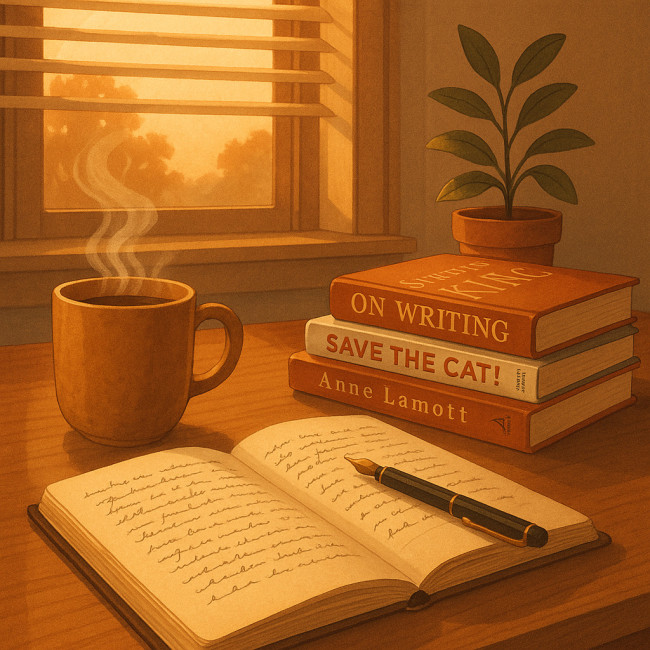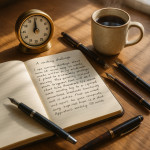Essential reading list for debut authors: 12 books that sharpen plot and prose
Ready to elevate your first manuscript from “promising” to “publish-ready”? These twelve craft books cover structure, style and storytelling, giving debut authors a step-by-step roadmap to stronger plots and cleaner prose.
Why the right craft books matter for debut authors

Writing a novel is a marathon. A carefully curated reading list offers three immediate wins: expert techniques on demand, motivating real-world examples and a mentor's voice when writer's block strikes. By combining structural handbooks, voice-driven essays and genre-specific guides, you'll develop a rounded skill set that shortens the learning curve.
The 12-book roadmap to tighter plots and vivid prose
1. “On Writing” – Stephen King
Part memoir, part masterclass, King demystifies daily discipline and line-level clarity. His toolbox section alone can reduce flabby sentences in a single editing pass.
2. “Save the Cat! Writes a Novel” – Jessica Brody
Brody adapts Blake Snyder's screenwriting beats for novelists. If your middle acts sag, the Catalyst and All Is Lost beats will keep pages turning.
3. “Story” – Robert McKee
McKee's deep dive into narrative design clarifies why readers crave change. Use his scene value shifts to replace meandering chapters with purposeful tension.
4. “Bird by Bird” – Anne Lamott
Liberate yourself from perfectionism. Lamott's humour and “shitty first drafts” mantra encourage fearless creation before analytical revision.
5. “Steering the Craft” – Ursula K. Le Guin
A practical workbook packed with voice, rhythm and POV drills. Ideal for tuning prose musicality.
6. “The Elements of Style” – Strunk & White
Concise, occasionally stern rules that trim unnecessary words. Regular rereads make clarity second nature.
7. “Wonderbook” – Jeff VanderMeer
Visually rich essays on imaginative fiction. Mind-mapping exercises spark original worlds and surprising metaphors.
8. “The Emotional Craft of Fiction” – Donald Maass
Maass explains how to make readers feel. His checklist for micro-tension turns passive scenes into page-turners.
9. “Writing Down the Bones” – Natalie Goldberg
Zen-inspired free-writing prompts build a daily habit and unlock authentic voice.
10. “Self-Editing for Fiction Writers” – Renni Browne & Dave King
From dialogue tags to point-of-view consistency, this manual offers before-and-after examples that highlight easy wins during revision.
11. “Consider This” – Chuck Palahniuk
Raw anecdotes plus hands-on assignments reveal how shock, pacing and image systems keep modern readers hooked.
12. “The Anatomy of Story” – John Truby
Truby's 22-step framework digs beneath three-act formulas. Ideal for weaving theme and character arc seamlessly.
How to use this reading list strategically
- Pair theory with practice. After each chapter, apply one technique to your work-in-progress.
- Schedule micro-goals. Example: finish King's toolbox by Friday, then revise one scene before Monday.
- Alternate structure and style. Switching focus keeps learning fresh and prevents overwhelm.
Progress tracker template
| Week | Book focus | Skill to apply | Draft milestone |
|---|---|---|---|
| 1 | “On Writing” | Concise sentences | Revise first 10 pages |
| 2 | “Save the Cat!…” | Identify 15 story beats | Outline full plot |
| 3 | “Bird by Bird” | Daily 500-word sprint | 10 000 new words |
| 4 | “Self-Editing…” | Dialogue polish | Clean first act |
Goodreads ratings snapshot
Source : Goodreads
Quick self-test: are you applying what you read?
Beyond craft: strengthen your author business savvy
Great prose alone doesn't land a publishing deal. Learn how to price your expertise with author day-rate benchmarks and streamline collaborations by setting crystal-clear deliverables. Choosing a commercially viable genre? Dive into data-driven genre analytics before your next outline.
For deeper skill-building opportunities, explore the curated training sessions on the Artfolio Author Training hub where published mentors walk you through live revisions.
FAQ
- Should I read all 12 books before finishing my draft?
- No. Alternate reading and writing. Complete two or three chapters, apply one technique, then continue drafting.
- Do these resources suit non-fiction writers?
- Yes. Structure, clarity and emotional resonance benefit memoirs, essays and narrative non-fiction alike.
- What if I can't afford every title?
- Start with library copies or e-book samples. Apply gleaned techniques, then invest in the volumes you revisit most.
Key takeaways
- Create a balanced study plan mixing plot architecture and sentence-level polish.
- Apply one actionable tip after each reading session to embed new skills.
- Supplement craft with business knowledge to navigate publishing confidently.
Ready to level up? Commit to reading the first title this week and watch your manuscript tighten within days.











